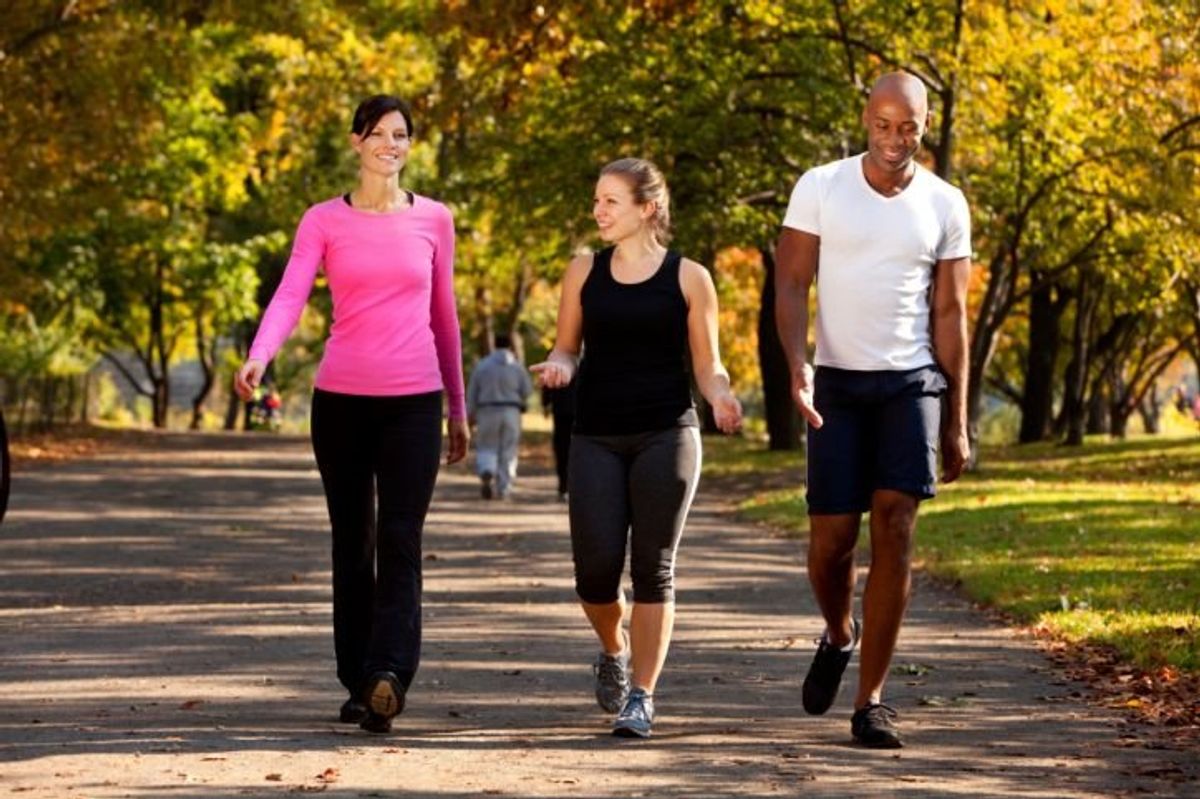When you hear advice to exercise for 30 to 45 minutes or more, nearly every day, you may think, "In whose life? Get real."
Many women feel the same way. We're too busy and too tired—from job, family, home and other demands—to squeeze exercise into our overcrowded days. Those time blocks seem like impossible hurdles to get over. Even if we try, it's difficult to stay on track for long.
Now, instead of feeling guilty about what you can't do, you can start feeling good about what's possible for you. Research shows that even short bursts of physical activity improve your health, especially if you spend your day sitting. Adding a little activity helps lower your cholesterol, blood pressure and weight, cuts your risk of heart attack and diabetes, and improves how you feel emotionally.
You'll have more energy to carry packages, garden, climb stairs, keep up with the kids at the amusement park, or dance past midnight. Those activities, in turn, will make you even stronger and healthier.
Women who walk for a total of just one hour a week have half the rate of heart disease as women who don't walk regularly. And it's never too late to benefit—in a recent study, people over 65 who were physically active once a week had a 40 percent lower death rate than those who were inactive.
It's easy to start
To get yourself moving, think small. "Take two-minute walks, whether it's one or 10 a day," says Andrea Dunn, Ph.D., director of the Behavioral Science Research Group at the Cooper Institute for Aerobics Research, Denver.
Walk at a moderately vigorous pace, Dunn says, as if you're trying to get to an appointment on time. Each week, increase how many minutes you walk a bit, or how often.
Gradually work up to three 10-minute brisk walks a day, several times a week. "It doesn't matter how fast you move up," says Dunn. In her research, people who succeeded often kept track of their walks on checklists or calendars.
If you have health concerns and are under a health care professional's care for a medical condition, review your exercise plans with her or him before you start.
Step this way
You'll gain more benefits from walking by increasing the steps you take at home, at work and for exercise. Middle-aged women who take more steps have less body fat than those taking fewer steps.
Use a pedometer, a step-counting gadget that clips onto your waistband. Record your step count for one week. Then divide by seven to get your daily average.
Increase your daily step count little by little. Sneak extra steps into your everyday life: Walk around the house while talking on a cordless phone, park at the far end of a supermarket lot (be sure it's well-lighted and secure), pace the sidelines while your child plays sports, or climb the stairs to your office instead of taking the elevator.
Aim for 10,000 steps a day, but work to that goal slowly. It's equal to about five miles.
Target fat in your middle
How does physical activity, even small amounts, improve your health?
Think of your body as a jelly doughnut. (Okay, for some of us that's easy to do.) The outer part of your doughnut—uh, body—is made up of fat that lies just under the skin. When you go on a diet and lose weight, you usually lose this type of fat, says Osama Hamdy, M.D., director of the Obesity Clinic at Joslin Diabetes Center, affiliated with Harvard Medical School, Boston.
Hidden deep in the center of your body is a more dangerous type of fat. This internal fat—often shown by a growing waistline—is directly related to high cholesterol, high blood pressure, heart disease and diabetes. According to Hamdy, physical activity reduces this belly fat more effectively than dieting does.
"Any moderately intense exercise that a person can do is very important. Do it five minutes a day, or 10 minutes a day," he says. "If you look at it as a routine of your day, you will find it easier over time."
A recent study Hamdy co-authored showed that obese adults who lost just 7 percent of their body weight—16 pounds in a 220-pound woman—through moderately intense exercise and diet lowered their heart disease risk. In another study, people at risk for type 2 diabetes reduced their risk 58 percent with brisk walking and a small weight loss.
Make it fun
Some women exercise with friends or in walking clubs. Mall-walking is fine, says Dunn, so long as you're moving briskly and not just strolling and window-shopping.
If walking doesn't appeal to you, choose another moderately vigorous activity, such as bike riding, swimming or dancing. Or mix up your exercise choices.
"Do things that are fun for you," Dunn advises. "Start small, work at your own pace and don't give up."







